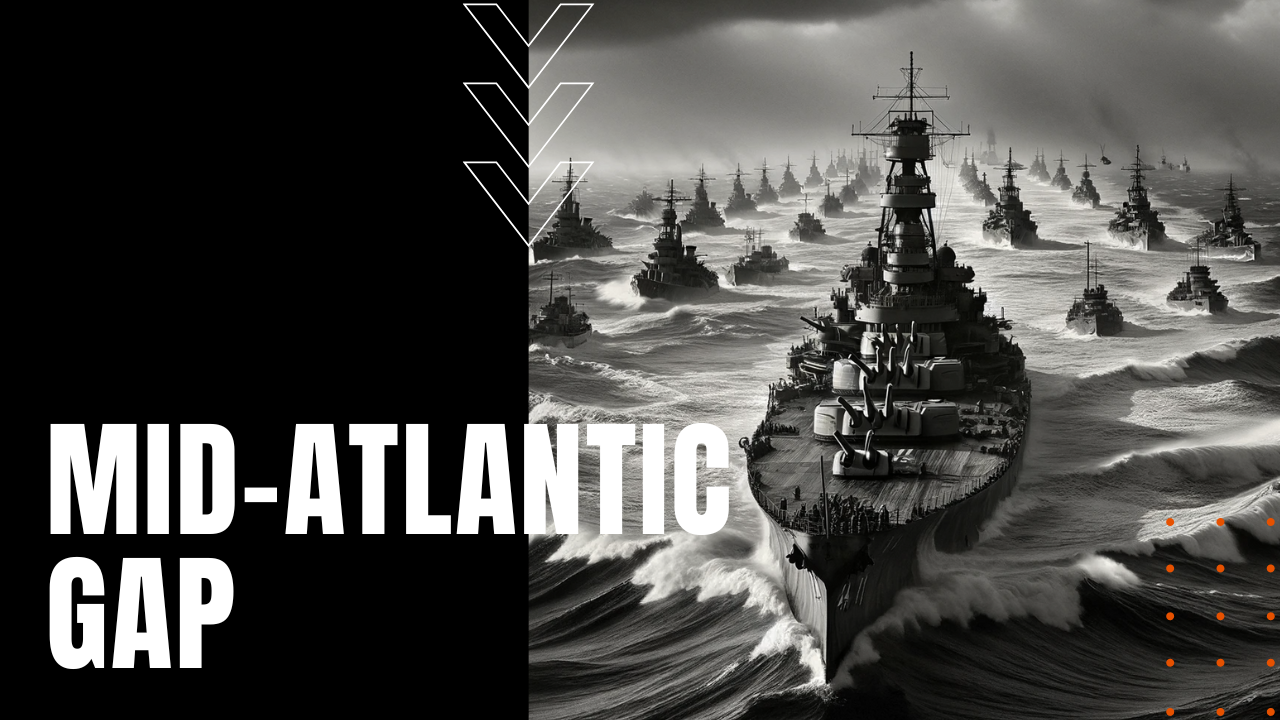The Mid-Atlantic Gap

During the early years of the Second World War—before the Allies had deciphered the German’s Enigma Code or developed air-to-surface radar, Hitler’s U-Boats wreaked havoc on North America’s ability to re-supply the British with desperately-needed war assets and basic supplies. Known respectively as the Mid-Atlantic Gap, the Greenland Gap, the Black Pit or simply The Gap, by the Fall of 1942, some 2,000 ships had been lost to German U-Boat attacks, who hunted in groups known as Wolf Packs, sending thousands of merchant seamen to unmarked graves in the frigid waters of the North Atlantic.
A Dire Situation
Losing more ships than Allied shipyards could produce, Allied war leaders saw the writing on the wall—without an effective stop to the U-Boat threat, Great Britain would be forced to sue for peace under the relentless vice of Nazi aggression. Emboldened by their early success in the Mid-Atlantic Gap, and fully aware that they could win the war by cutting off Britain’s vital supply chain, the situation worsened in May of 1942, when a swarm of German U-boats entered the Gulf of Saint Lawrence and the inland waters of the Saint Lawrence River, sinking 21 ships with relative ease.
Return of Convoys
Using a strategy born in World War One, merchant ships formed massive convoys before steaming across the 1,000-mile Mid-Atlantic Gap, escorted by Allied Naval warships who kept a vigilant eye out for marauding U-Boats. Even so, losses remained egregiously high, until Allied ingenuity combined with its tactical, industrial and technological might to crush the U-Boat threat once and for all. In early 1943, the Allies established air bases in Newfoundland, Iceland and Greenland in an effort to extend air support over The Gap, at the same time employing long-ranger bombers like the B-24 Liberator, equipped with the first air-to-surface radar systems, which could penetrate the perpetual fog over the Grand Banks that gave U-Boats their early advantage.
End of U-boat Dominance
Increased reconnaissance and anti-submarine patrols combined with advances in anti-sub warfare techniques, employing sonar and new depth charge systems, severely biting into the German’s ability to sink Allied ships, which ultimately closed the Mid-Atlantic Gap by May of 1943, making victory over the Black Pit, a crucial turning point in the Battle of the Atlantic and, ultimately, the eventual outcome of the Second World War.
